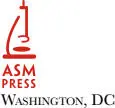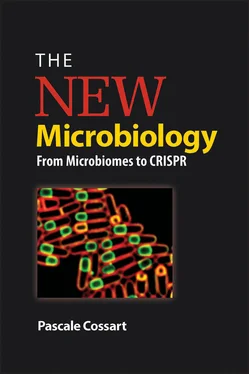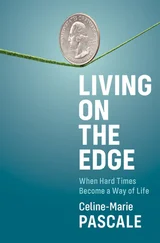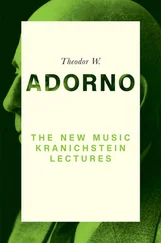1 Cover
2 PREFACE
3 ACKNOWLEDGMENTS
4 ABOUT THE AUTHOR
5 PART I: New Concepts in Microbiology PART I New Concepts in Microbiology
CHAPTER 1: Bacteria: Many Friends, Few Enemies CHAPTER 2: Bacteria: Highly Organized Unicellular Organisms CHAPTER 3: The RNA Revolution CHAPTER 4: From the CRISPR Defense System to the CRISPR/Cas9 Method for Modifying Genomes CHAPTER 5: Antibiotic Resistance
6 PART II: Sociomicrobiology: The Social Lives of Bacteria CHAPTER 6: Biofilms: When Bacteria Gather Together CHAPTER 7: How Bacteria Communicate: Chemical Language and Quorum Sensing CHAPTER 8: When Bacteria Kill Each Other CHAPTER 9: Human-Animal Symbioses: The Microbiotas CHAPTER 10: Bacterium-Plant Symbioses: Microbiotas of Plants CHAPTER 11: Endosymbiotic Relationships
7 PART III: The Biology of Infections CHAPTER 12: Pathogenic Bacteria, Major Scourges, and New Diseases CHAPTER 13: The Multiple Strategies of Pathogenic Bacteria CHAPTER 14: Pathogenic Bacteria in Insects CHAPTER 15: Plants and Their Pathogenic Bacteria CHAPTER 16: New Visions in Infection Defense
8 PART IV: Bacteria as Tools CHAPTER 17: Bacteria as Tools for Research CHAPTER 18: Bacteria: Old and New Health Tools CHAPTER 19: Bacteria as Environmental Tools CHAPTER 20: Conclusion
9 APPENDIX: Major Figures in Microbiology
10 GLOSSARY
11 BIBLIOGRAPHY
12 PHOTO CREDITS
13 INDEX
14 End User License Agreement
1 Chapter 1 Figure 1 Figure 2
2 Chapter 2 Figure 3 Figure 4
3 Chapter 3 Figure 5 Figure 6 Figure 7 Figure 8
4 Chapter 4 Figure 9 Figure 10
5 Chapter 5 Figure 11
6 Chapter 6Figure 12
7 Chapter 7Figure 13
8 Chapter 8Figure 14
9 Chapter 11Figure 15
10 Chapter 12Figure 16
11 Chapter 13Figure 17Figure 18
1 Cover
2 Table of Contents
3 Begin Reading
1 Page v
2 Page iii
3 Page iv
4 Page vii
5 Page viii
6 Page ix
7 Page x
8 Page xi
9 Page xii
10 Page xiii
11 Page 1
12 Page 3
13 Page 4
14 Page 5
15 Page 6
16 Page 7
17 Page 9
18 Page 10
19 Page 11
20 Page 12
21 Page 13
22 Page 15
23 Page 16
24 Page 17
25 Page 18
26 Page 19
27 Page 20
28 Page 21
29 Page 22
30 Page 23
31 Page 24
32 Page 25
33 Page 26
34 Page 27
35 Page 29
36 Page 30
37 Page 31
38 Page 32
39 Page 33
40 Page 34
41 Page 35
42 Page 36
43 Page 37
44 Page 38
45 Page 39
46 Page 41
47 Page 42
48 Page 43
49 Page 45
50 Page 46
51 Page 47
52 Page 48
53 Page 49
54 Page 50
55 Page 51
56 Page 52
57 Page 53
58 Page 55
59 Page 56
60 Page 57
61 Page 58
62 Page 59
63 Page 60
64 Page 61
65 Page 62
66 Page 63
67 Page 64
68 Page 65
69 Page 66
70 Page 67
71 Page 68
72 Page 69
73 Page 70
74 Page 71
75 Page 73
76 Page 74
77 Page 75
78 Page 76
79 Page 77
80 Page 78
81 Page 79
82 Page 81
83 Page 82
84 Page 83
85 Page 84
86 Page 85
87 Page 86
88 Page 87
89 Page 88
90 Page 89
91 Page 90
92 Page 91
93 Page 92
94 Page 93
95 Page 94
96 Page 95
97 Page 96
98 Page 97
99 Page 98
100 Page 99
101 Page 100
102 Page 101
103 Page 103
104 Page 104
105 Page 105
106 Page 106
107 Page 107
108 Page 108
109 Page 109
110 Page 110
111 Page 111
112 Page 112
113 Page 113
114 Page 115
115 Page 116
116 Page 117
117 Page 118
118 Page 119
119 Page 120
120 Page 121
121 Page 123
122 Page 125
123 Page 126
124 Page 127
125 Page 128
126 Page 129
127 Page 130
128 Page 131
129 Page 132
130 Page 133
131 Page 135
132 Page 136
133 Page 137
134 Page 138
135 Page 139
136 Page 140
137 Page 141
138 Page 143
139 Page 144
140 Page 145
141 Page 146
142 Page 147
143 Page 148
144 Page 149
145 Page 151
146 Page 152
147 Page 153
148 Page 155
149 Page 156
150 Page 157
151 Page 159
152 Page 160
153 Page 161
154 Page 162
155 Page 163
156 Page 164
157 Page 165
158 Page 166
159 Page 167
160 Page 168
161 Page 169
162 Page 170
163 Page 171
164 Page 173
165 Page 174
166 Page 175
167 Page 176
168 Page 177
169 Page 178
170 Page 179
171 Page 180
172 Page 181
173 Page 182
174 Page 183
175 Page 184
176 Page 185
177 Page 191
THE
NEW
Microbiology
From Microbiomes to CRISPR
Pascale Cossart
Institut Pasteur
Paris, France

Cover image: Bacillus subtilis bacteria in the process of sporulation. The spore membrane is green and the bacterial membrane is red. Courtesy of Javier Lopez Garrido and Kit Pogliano, University of California, San Diego.
Translation of La nouvelle microbiologie: Des microbiotes aux CRISPR by Pascale Cossart, (C) ODILE JACOB, 2016
Copyright © 2018 by ASM Press. ASM Press is a registered trademark of the American Society for Microbiology. All rights reserved. No part of this publication may be reproduced or transmitted in whole or in part or reutilized in any form or by any means, electronic or mechanical, including photocopying and recording, or by any information storage and retrieval system, without permission in writing from the publisher.
Disclaimer: To the best of the publisher’s knowledge, this publication provides information concerning the subject matter covered that is accurate as of the date of publication. The publisher is not providing legal, medical, or other professional services. Any reference herein to any specific commercial products, procedures, or services by trade name, trademark, manufacturer, or otherwise does not constitute or imply endorsement, recommendation, or favored status by the American Society for Microbiology (ASM). The views and opinions of the author(s) expressed in this publication do not necessarily state or reflect those of ASM, and they shall not be used to advertise or endorse any product.
Library of Congress Cataloging-in-Publication Data
Names: Cossart, Pascale, author.
Title: The new microbiology : from microbiomes to CRISPR / Pascale Cossart, Institut Pasteur, Paris, France.
Other titles: Nouvelle microbiologie. English
Description: Washington, DC : ASM Press, [2018] | Includes bibliographical references and index.
Identifiers: LCCN 2018001322 (print) | LCCN 2018003826 (ebook) |
ISBN 9781683670117 (e-book) | ISBN 9781683670100 |
ISBN 9781683670100 (print)
Subjects: LCSH: Microbiology.
Classification: LCC QR41.2 (ebook) | LCC QR41.2 .C6713 2018 (print) |
DDC 579—dc23
LC record available at https://lccn.loc.gov/2018001322
doi:10.1128/9781683670117
Address editorial correspondence to: ASM Press, 1752 N St., NW, Washington, DC 20036-2904, USA.
Читать дальше












